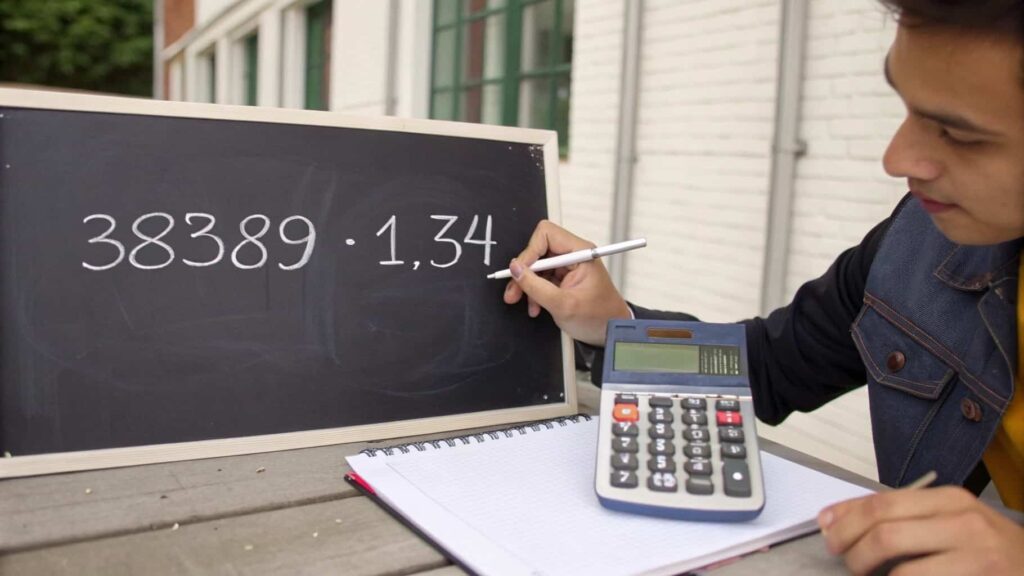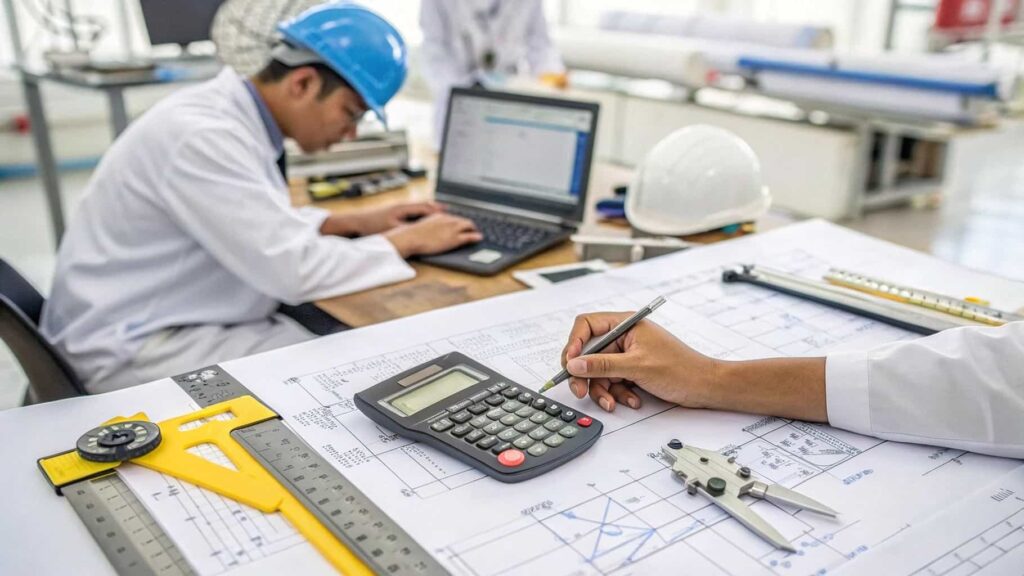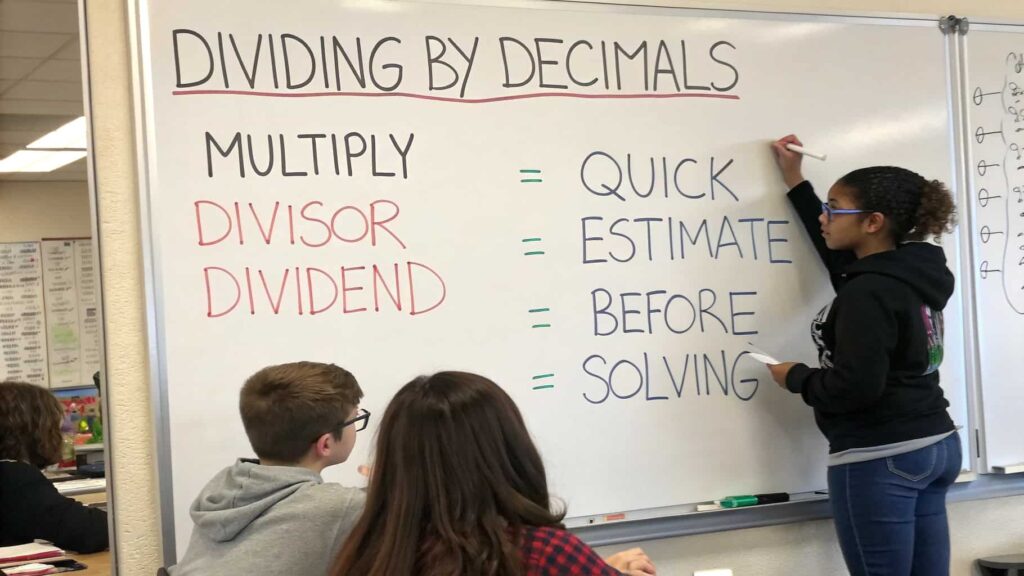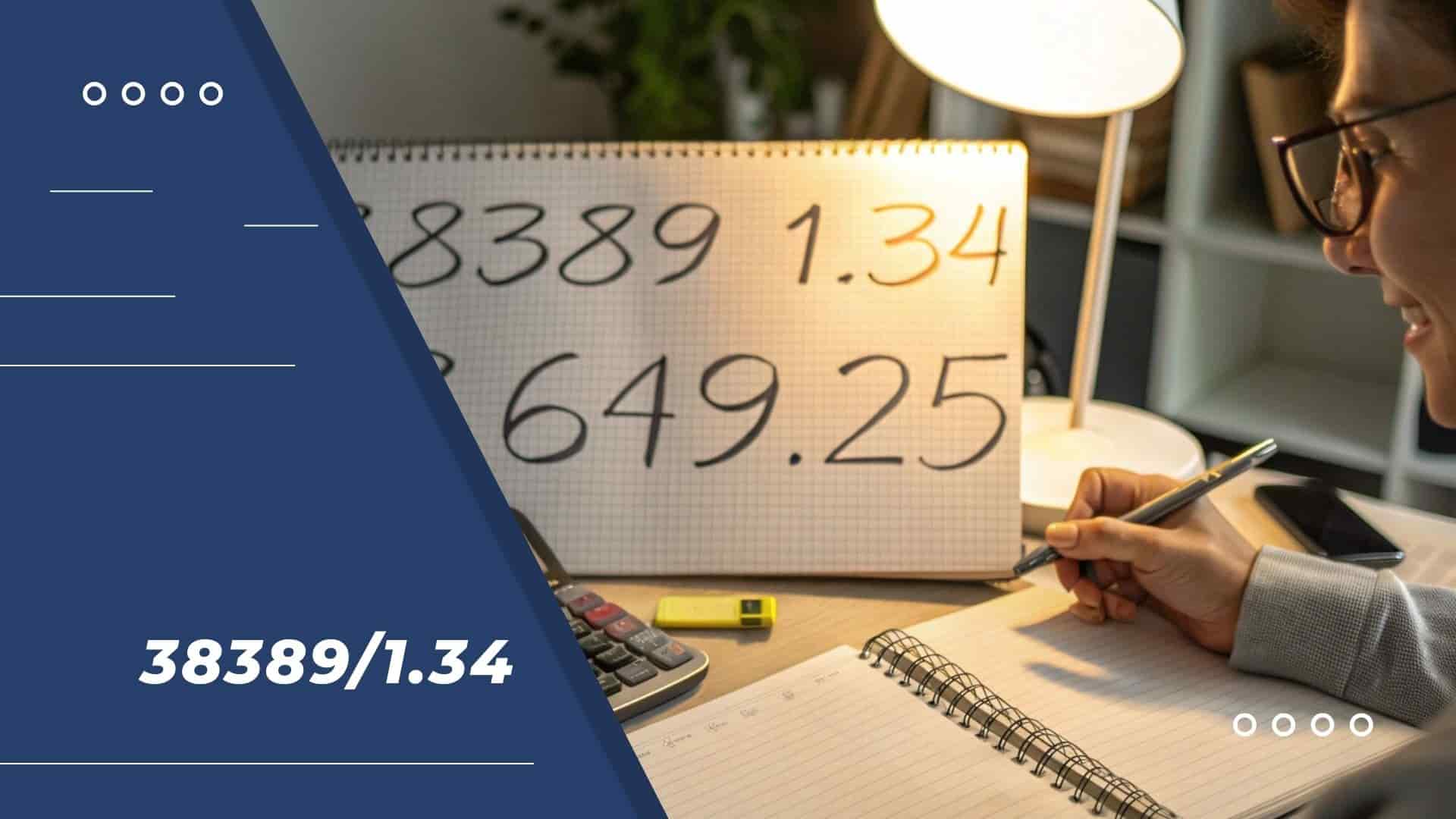When I was working on a project, I had to divide 38389 by 1.34 to adjust some measurements, and I remember how tricky it felt at first. I quickly realized that simplifying the decimal made it so much easier to handle. It felt satisfying to see the result come out right, especially after using the method I’d learned to keep things accurate.
Dividing 38389 by 1.34 gives approximately 28,649.25. This operation helps simplify calculations in various fields like engineering, finance, and scientific measurements. Understanding how to divide large numbers by decimals is essential for practical problem-solving.
Stay tuned with us as we dive deeper into the world of decimal division! We’ll explore how the calculation of 38389/1.34 plays a key role in real-world applications and how mastering this technique can make your life a lot easier. Don’t miss out on our upcoming insights.
What Does 38389 Divided By 1.34 Equal In Decimal Form?
Convert the divisor (1.34) into a whole number by multiplying both the dividend and divisor by 100:
38389 × 100 = 3,838,900
1.34 × 100 = 134

Divide the whole numbers:
3,838,900 ÷ 134 ≈ 28,649.25
This method helps eliminate the decimal and simplifies the division.
Would you like a visual or step-by-step worksheet version of this for teaching or practice?
How Do You Divide A Large Number By A Decimal?
Dividing a large number by a decimal might seem tricky at first, but there’s a simple way to make it easier. Just shift the decimal point by multiplying both numbers by the same amount—usually a power of 10. So if you’re dividing by 1.34, you’d multiply both numbers by 100, turning it into 134.
Now you’re working with whole numbers, which makes the math a lot more manageable. Once you’ve done the division, the result is still the same. It’s just a smoother way to handle the calculation without the distraction of decimals.
What Are The Steps To Divide 38389 By 1.34 Accurately?
These are the steps :
- Multiply both 38389 and 1.34 by 100 to eliminate the decimal.
- This gives you 3838900 ÷ 134.
- Perform the division: 3838900 ÷ 134.
- The result is approximately 28,649.25.
- Double-check the result to ensure accuracy.
- This method simplifies the division by converting it into whole numbers.
Can Dividing Numbers Like 38389 By 1.34 Help Students Understand Decimal Operations Better?
Yes, dividing numbers like 38389 by 1.34 can really help students get a better handle on decimal operations. It’s a practical way to work with decimals and shows how important it is to scale numbers correctly. Doing problems like this helps students get comfortable with decimal placement and sharpens their division skills in everyday situations.
Plus, it gives them a taste of how decimals come into play in real-life tasks, like budgeting or measurements. It’s a great way to build confidence and make math feel more relevant. It’s a great way to build confidence and make math feel more relevant. Understanding these operations can also make future, more advanced topics like fractions or percentages feel easier to tackle.
Why Do We Convert Decimals To Whole Numbers During Division?
We convert decimals to whole numbers during division because it makes things a lot simpler. Working with whole numbers is much easier and quicker than dealing with decimals. By multiplying both the dividend and divisor by the same power of 10, we get rid of the decimal points, turning the problem into something we’re more used to: dividing integers.
This method helps avoid confusion with decimal places and makes using long division or a calculator feel smoother. It also reduces the chances of making rounding errors. In the end, it’s just a practical way to make the math easier and more accurate.
How Is Decimal Division Used In Science And Engineering?
Decimal division plays a big role in science and engineering because it helps with precise calculations. For example, it’s used to convert units, like changing millimeters to centimeters, or to adjust data for accuracy in experiments. Engineers use it to scale calculations or assess the strength of materials.

In science, decimals help with finding averages or determining the right concentrations for experiments. It’s all about making sure measurements are as accurate and reliable as possible. In engineering, decimal division is also key to ensuring safety factors are built into designs. Overall, it helps keep everything precise in both research and real-world applications.
What Real-Life Examples Involve Dividing Large Numbers By Decimals?
- Construction: In construction, engineers often need to calculate material usage per square foot or meter. This involves dividing large quantities by decimal values. It ensures efficient planning and reduces waste.
- Finance: Financial analysts divide revenues or costs by decimal interest rates or inflation factors. This helps them forecast future values or adjust for economic changes. It’s key to accurate financial modeling.
- Science: Scientists frequently adjust measurements using decimal division. For instance, converting results to match standardized units often requires dividing by decimal factors. This maintains precision across experiments.
- Cooking & Catering: When scaling recipes for different group sizes, cooks divide large ingredient amounts by decimal portions. This ensures each serving is just right. It’s especially useful in catering and meal prep.
- Retail: Retailers use decimal division to break down bulk prices. Dividing the total cost by decimal quantities gives a clear per-item price. This helps with pricing and promotions.
How Can I Teach Students To Divide Large Numbers With Decimals Effectively?
If you want to teach students how to divide large numbers with decimals in a way that really sticks, start by keeping it simple and relatable. Walk them through how decimals work, then show them the trick of multiplying both numbers to turn the decimal into a whole number, it’s a game changer. Use clear, step-by-step examples and let them try it themselves with some guidance.
Real-life situations, like splitting a bill or figuring out discounts, help make the math feel more useful and less intimidating. Mix in both written work and calculator practice to build confidence. And above all, be patient,everyone learns at their own pace, and a few visual aids can go a long way.
What are common mistakes when dividing by decimals?
Forgetting To Move The Decimal Point:
Many students try to divide without converting the decimal into a whole number. This can make the math harder and lead to wrong answers. Moving the decimal makes things simpler.
Only moving the decimal in one number:
Sometimes, the decimal is shifted in the divisor but not in the dividend. This changes the value of the equation entirely. Both numbers must be adjusted equally.
Misplacing the decimal in the answer:
Even if the math is correct, putting the decimal in the wrong spot throws off the result. It’s an easy mistake with big consequences. Always double-check the placement.
Rounding too early:
Students sometimes round mid-way through the problem. This causes small errors to grow by the end. Rounding should come last, not during the process.
Skipping steps in long division:
Long division with large numbers can get tricky. Missing just one digit or step can mess up the whole answer. It’s important to go slowly and carefully.
How To Avoid These Mistakes ?
To help students avoid common mistakes when dividing by decimals, it’s all about building good habits in a way that makes sense to them. Start by showing them how to get rid of the decimal by multiplying both numbers,just like shifting the problem into easier territory. Remind them to always move the decimal in both numbers, not just one.

When it comes to the final answer, encourage them to make a quick estimate first so they know where the decimal should land. Tell them to save any rounding for the very end so they don’t lose accuracy. Breaking the problem into clear steps helps, especially with long division. And finally, teach them to double-check by multiplying their answer back,it’s a simple trick that really boosts confidence.
FAQs:
Is There A Shortcut To Divide Numbers Like 38389 By 1.34?
To divide 38389 by 1.34 more easily, multiply both numbers by 100 to eliminate the decimal. This turns the problem into 3838900 ÷ 134. Then, perform the division as usual to get the result, which is approximately 28,649.25.
How Can Understanding 38389 ÷ 1.34 Improve Math Fluency?
Understanding 38389 ÷ 1.34 boosts math fluency by helping students practice decimal division. It builds confidence in key skills like place value and estimation. Mastering these problems also makes tackling more complex math easier. Plus, it shows how math applies to real-life situations.
What’s A Quick Way To Check If I Divided A Number By A Decimal Correctly?
A quick way to check if you divided a number by a decimal correctly is to multiply the result by the divisor. If you get back the original number, then your division is correct. For example, if you divide 38389 by 1.34 and get a result, simply multiply that result by 1.34 if you return to 38389, you’re good to go.
How Does Decimal Division Show Up In Everyday Shopping Or Budgeting?
Decimal division comes in handy in shopping and budgeting when splitting costs, calculating discounts, or managing finances. For example, you might divide the total price by the number of items to find the average cost. In budgeting, it helps track daily or category-wise spending. It’s a practical way to keep finances organized and stay on track.
Can Decimal Division Be Used To Calculate The Fuel Efficiency Of A Vehicle?
Yes, decimal division is used to calculate a vehicle’s fuel efficiency. You divide the miles driven by the gallons or liters of fuel used. For example, 300 miles divided by 10 gallons gives 30 miles per gallon. This helps determine how efficiently the vehicle consumes fuel.
How Can Decimal Division Help Estimate Change Or Refunds In Transactions?
Decimal division helps estimate change or refunds by dividing the difference between the amount paid and the total cost. For example, subtract the total from what was paid, then divide to find the correct refund. It ensures accuracy in giving back the right amount. This method is commonly used in transactions and cash handling.
Conclusion:
Decimal division is a surprisingly useful skill that shows up in so many real-life situations , whether you’re figuring out fuel efficiency, calculating a discount, or making sure you get the right change. Getting the hang of it boosts your math fluency and makes tasks like budgeting, shopping, and managing your money feel more manageable.
The more you understand how to divide by decimals, the easier it becomes to make confident, practical decisions. Plus, with a little practice, it helps build problem-solving skills that can be applied in almost any scenario. Ultimately, mastering decimal division just makes life a little bit smoother.
Also Read:




